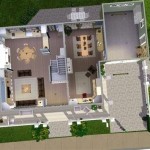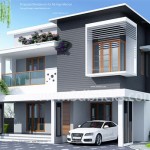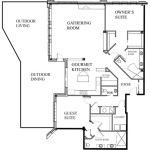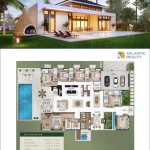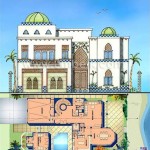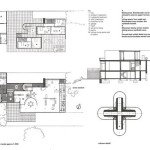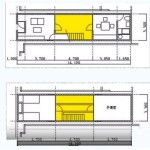Essential Aspects of Concept House Plans
Concept house plans outline the core design elements of your future home, serving as a blueprint for the structure and layout of your dream space. When creating these plans, it's crucial to consider several key aspects to ensure an efficient, aesthetically pleasing, and functional home.
1. Site Analysis and Orientation
Begin by thoroughly analyzing the building site. Assess factors like soil conditions, topography, slope, sunlight exposure, and prevailing winds. The orientation of the house should maximize natural light, minimize energy consumption, and take advantage of any desirable views.
2. Functional Layout and Space Planning
Determine the specific spaces and functions required for your lifestyle. Consider the number of bedrooms, bathrooms, living areas, and ancillary spaces. Plan the flow of movement between rooms and ensure sufficient circulation space for comfortable living.
3. Architectural Style
Select an architectural style that complements your site and personal preferences. Whether it's traditional, contemporary, or something in between, the style should reflect the overall design concept and create a cohesive exterior and interior.
4. Material Selection
Choose building materials that align with your aesthetic, durability, and budget requirements. Consider local availability, environmental impact, and the desired architectural expression. Explore options like wood, brick, stone, or modern composite materials.
5. Structural Design
Develop a structural system that provides the necessary support for your home. Determine the foundation, framing, and roofing components based on site conditions, span requirements, and local building codes. Ensure the structural integrity and safety of your house.
6. Mechanical, Electrical, and Plumbing Systems
Plan the infrastructure that supports the functionality of your home. Design HVAC systems for heating and cooling, electrical systems for power distribution, and plumbing systems for water supply and sanitation. Consult with qualified professionals for efficient and reliable installations.
7. Energy Efficiency
Incorporate energy-saving features into your concept house plans to reduce energy consumption and environmental impact. Consider insulation, energy-efficient windows and appliances, and renewable energy sources like solar panels. Aim for a sustainable and eco-friendly home.
8. Budget and Timeline
Establish a realistic budget for the construction of your home. Consult with contractors to determine the approximate costs of materials, labor, and permitting. Also, set a tentative timeline for the completion of your project.
Conclusion
Creating concept house plans is a crucial step in the home-building process. By considering these essential aspects, you can establish a solid foundation for a home that meets your functional needs, aesthetic preferences, and budgetary constraints. With careful planning and collaboration with qualified professionals, you can transform your dream home into a reality.

Why Open Concept Floor Plans Because They Work

Conceptual Home Designs

Open Concept Ranch Floor Plans Houseplans Blog Com

Small House Plan Ch62

Open Concept Ranch Floor Plans Houseplans Blog Com

Your Open Concept Floor Plan Here S How To Fix It Laurel Home

Open Concept Ranch Floor Plans Houseplans Blog Com

House Design Trends What S Popular In Cur Floor Plans Extra Space Storage

Home Design With Open Concept Floor Plan 4740

Open Concept Barn House Plans Blog Dreamhomesource Com

